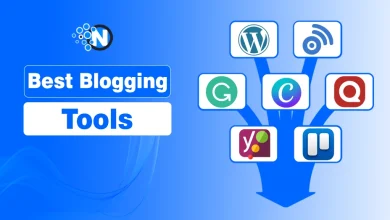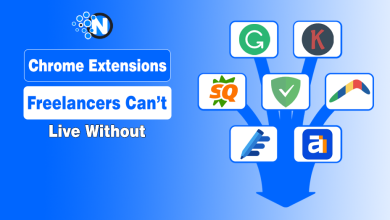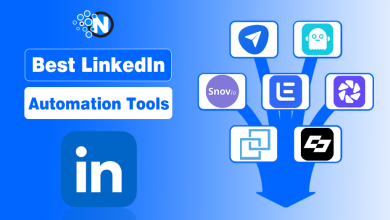What is Repurposing Content? Examples, Benefits, & How to Create

No matter the niche or platform, content is the driving force behind every successful digital presence. It builds trust, attracts the right audience, and ultimately defines your brand’s authority online.
Nevertheless, this world has made it extremely challenging to create high-quality content daily to maintain the same standards and resonate with the basic idea. I’ve been there myself while staring at the screen, trying to come up with fresh ideas that match my previous posts’ standards while still keeping the original message intact.
You can be a robot if you want to follow this hectic task or work an effective strategy as a substitute option. One such tactic is repurposing content.
It puts you on the route of creating good content swiftly. I have developed this comprehensive guide to understand its benefits, ways and AI tools to create quickly.
What is Repurposing Content?
Repurposing content means taking existing material such as blog posts, podcasts, videos, or reports and changing it into new formats to reach fresh audiences and boost engagement.
It preserves your original message while presenting it in new, engaging ways that can reach different audience segments. Through this approach, you save valuable time while enhancing your content’s overall value and reach.
Examples:
- Turn a blog post into a YouTube video.
- Convert a webinar into social media clips.
- Transform a research report into an infographic.
- Repurpose a podcast into a transcript blog or LinkedIn article.
At its core, repurposing is about maximizing the return on your content investment by giving successful pieces extended life across multiple channels and formats.
What are Some Benefits of Repurposing a Content?

1. Time Efficiency
Creating new content from the very beginning takes a significant toll on time and resources. But, when you are going to recreate or modify your existing material, it will save a larger time period.
Furthermore, you don’t need to put in extra effort as most of your content is already generated. You only need to optimize it according to the current standards to pocket all the possible benefits.
2. Extended Reach
Repurposing content not only improves the quality of your existing material but also enables you to attract a broader range of audience by making your content compatible with different social media platforms.
You can place your content on YouTube or another video-sharing platform by integrating the videos. Similarly, social posts let you share them on Instagram, Facebook, X, and other handles. Hence, you can reach a broader audience.
3. SEO Enhancement
Search engines reward freshness and consistency. Updating and republishing older content improves SEO by:
- Adding new keywords and internal links.
- Refreshing outdated information.
- Creating backlinks from newer assets (videos, social snippets, etc.).
This boosts visibility while signaling Google that your website remains active.
4. Showcasing Expertise
Repurposing positions your brand as an authority. Presenting the same knowledge in diverse formats (articles, visuals, videos) helps audiences view your expertise from multiple angles, building trust and thought leadership.
5. Cost-Effective Content Production
Creating new content requires significant investment in research, design, and production. This approach creates excellent value on a per content piece basis, while costing the business fewer and great to achieve this, this strategy is a perfect fit for businesses with limited dollars to put into content marketing.
6. Reinforced Key Messages
Frequency of repetition of your core messages by the audiences, in multiple formats and across several platforms, hence, provided a great boost in retention and recall.
This repetition, which is conveyed in different content types – reiterates your core messages without being repetitive “again and again” so to speak the brand messages and the increased likelihood that your audience will remember and act upon your information.
7. Improved Content Accessibility
Through changing information into various formats, you make your information available to people with varied learning inclinations and accessibility requirements.
For instance offering such a version as a written form as well as audio one can serve those who prefer reading instead of listening, video with captions can serve both types of learners – visual and those with hearing impairments.
8. Extended Content Lifespan
Quality content often has a short initial lifespan, with engagement metrics dropping rapidly after publication. Repurposing revives valuable content and reinjects it into your audience’s life with new forms, prolonging the practical life of content.
How to Repurpose Content for Various Platforms?
1. Identify High-Value Content
With limited resources, you can’t repurpose everything. Use analytics to identify your best-performing content, pieces with high engagement, strong search rankings, or exceptional conversion rates. Also consider evergreen content that remains relevant regardless of timing.
💡Pro Tip:
Look for content that addresses frequently asked questions or common pain points in your industry, this material typically performs well across multiple formats.
2. Implement Strategic Repurposing Techniques
Once you’ve identified suitable content, consider these repurposing approaches:
- Update articles into visual content: Convert key points into infographics, data visualizations, or slide presentations.
- Create video content: Develop tutorial videos, explainer animations, or talking-head discussions based on written content.
- Develop audio formats: Adapt content into podcast episodes or audio guides.
- Extract social media snippets: Pull quotable sections, statistics, or tips for platform-specific social posts.
- Compile related content: Combine several related pieces into comprehensive guides or eBooks.
3. Optimize for Different Platforms
Every platform has its own culture, style, and content length preferences:
- YouTube: Long-form, educational content
- Instagram: Visual and short-form
- LinkedIn: Professional tone, thought leadership
- TikTok/Reels: Quick, snappy storytelling
4. Maintain Consistency and Quality
Regardless of the platform or format, your tone, color palette, and messaging must align with your brand identity. Always include consistent calls-to-action (CTAs) to drive conversions.
5. Track Performance Metrics
Monitor engagement metrics across each repurposed version. Compare reach, watch time, conversions, and feedback to identify what resonates most. Use this data to refine future repurposing strategies.
💡Pro Tip:
Use content attribution tracking to track the interplay between your repurposed pieces so that you can better understand the engagement with your brand that these formats generate.
Platform-Specific Repurposing Tips
| Platform | Content Type | Key Focus |
|---|---|---|
| Reels, Carousels, Infographics | Visual storytelling & concise captions | |
| YouTube | Tutorials, Explainers | Longer-form, value-driven videos |
| Articles, Thought pieces | Professional tone & insights | |
| TikTok | Quick tips, mini-guides | Short, engaging visuals |
| Infographics, Visual guides | Aesthetic, clickable pins | |
| X (Twitter) | Threads, Quotes | Concise, viral statements |
Use of AI Tools in Content Repurposing
The integration of AI tools also now allow creators and marketers repurpose content in less but unique way. You can automate tasks, enhance creativity, and scale output faster than ever with the right tools. Here’s how AI contributes to each phase:
1. Content Analysis & Selection
AI-driven analytics platforms like HubSpot, Ahrefs, or Google Analytics can identify your top-performing content by engagement, impressions, and conversion data. This helps determine which assets deserve repurposing.
2. Content Transformation
Tools such as ChatGPT, Jasper, or Copy AI can rewrite, summarize, or expand existing text into different formats while maintaining tone and intent.
3. Video & Audio Repurposing
AI tools like Descript and Pictory allow you to:
- Automatically transcribe video/audio.
- Create short clips from longer recordings.
- Add captions or voiceovers
- Adjust the lipsing style as per words.
This drastically reduces manual editing time and enhances accessibility.
4. Visual & Infographic Creation
Some of the best AI design tools like Canva Magic Studio, Visme, and Designs.ai transfigure written content into attractive visuals and infographics which are perfect for Pinterest, Instagram, or LinkedIn.
5. Content Scheduling & Distribution
Automation tools like Buffer, Hootsuite, and Later use AI to determine optimal posting times, track engagement, and schedule repurposed content efficiently across multiple platforms.
👉 Pro Tip: Combine AI efficiency with human creativity. Use AI to structure and scale, but refine tone, authenticity, and context manually for the best results.
Best Practices for Effective Repurposing
- Keep it relevant: Only repurpose evergreen or high-performing content.
- Update before republishing: Refresh facts, stats, and links.
- Vary the format, not just the title: Change how the content looks or feels.
- Add visual and audio elements: Make the material multi-sensory.
- Utilize AI for scale: But maintain human editing for tone and nuance.
HubSpot’s Multi-Format Approach – Real-World Success Story
HubSpot regularly transforms their comprehensive marketing guides into webinars, infographics, social media carousels, and video tutorials. Their “Ultimate Guide to Instagram Marketing” became a webinar series, multiple blog posts, and an email course – each format reaching different segments of their audience.
Final Verdicts
Repurposing content is a powerful strategy to optimize the value of your current content effortlessly. You can use this mighty approach for more exceptional perks.
You can change your material from a dull and boring structure to highly engaging content just by the identification of suitable content and implementing creative strategies.
Also, by adapting to different platforms, maintaining quality, and consistently tracking performance, you can effectively extend your content’s reach, enhance engagement, and achieve huge success in your content marketing endeavors.

Our professional content optimization services can help. From improving rankings to attracting more readers, we make sure your content performs at its best, so you can focus on creating great articles.
People Also Ask
Why should I repurpose my content?
To save time, reach more people, improve SEO, and strengthen brand awareness without creating everything from scratch.
Which AI tools are best for repurposing content?
ChatGPT, Descript, Jasper, Canva, and SurferSEO are among the most effective for writing, visuals, and optimization.
How often should I repurpose content?
Regularly, especially for evergreen topics that continue to attract engagement and remain relevant.
Does repurposing affect SEO negatively?
No, if done correctly. Update the content, optimize keywords, and ensure unique context for each format.
What content works best for repurposing?
Blog posts, guides, webinars, podcasts, and data reports – anything educational or evergreen.




